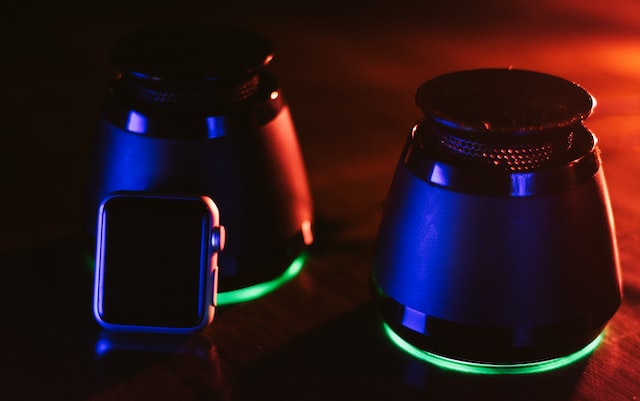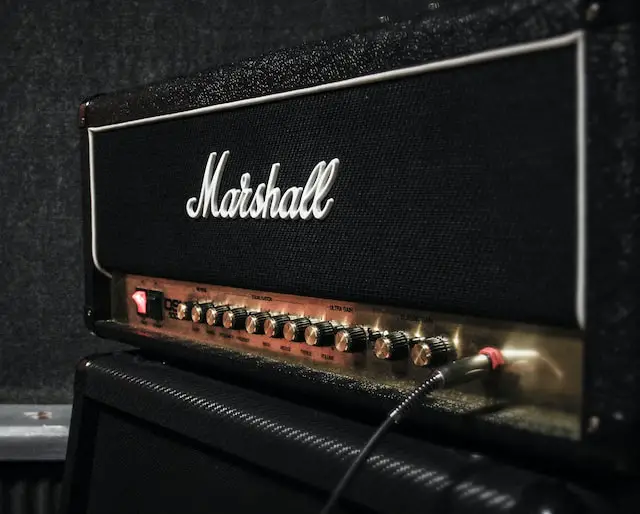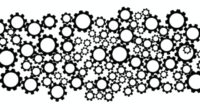Active speakers are typically more expensive than passive ones but often provide better sound quality. Passive speakers require amplification from an external source such as an AV receiver or amplifier, while active models have built-in power amplifiers. Both types of speaker systems can offer great sound quality if they are matched correctly with the right components and setup.
Active vs Passive Speakers
(Photo By Michail Sapiton on Unsplash )

Active speakers have a built-in amplifier that powers the speaker, while passive speakers rely on an external amplifier to power the speaker.
There are pros and cons to both active and passive speakers. Active speakers are typically more expensive than passive speakers, but they offer a few advantages. One advantage of active speakers is that they’re easier to set up since you don’t need to worry about connecting an external amplifier. Another advantage is that active speakers often have better sound quality since the built-in amplifier can be tuned to match the speaker.
Passive speakers have a few advantages over active speakers as well. One advantage is that they’re usually less expensive than active speakers. Another advantage is that you can mix and match different brands of amplifiers and speakers to get the perfect sound for your system.
Also, active speakers are typically more powerful than passive speakers, since they have a built-in amplifier. This can be a great advantage if you need to fill a large room with sound or want to use your speakers for outdoor parties. However, the downside is that active speakers are more expensive than passive counterparts.
Passive speakers are typically more durable than active speakers since they don’t have any internal amplifiers or other electronic components that can break down over time. However, the lifespan of a passive speaker will still depend on a number of factors, such as the quality of the materials used and how often it is used. With proper care and storage, a passive speaker can last for many years.
How do you tell if a speaker is active or passive?
There are a few key things to look for when trying to determine if a speaker is active or passive. First, check to see if the speaker has its own power source. If it does, then it is likely an active speaker. Another way to tell is by looking at the input options on the speaker. If there are only two options (one for left and one for right), then it is most likely a passive speaker. Finally, you can try testing the speaker by playing some music through it. If the sound quality is significantly better than other speakers you’ve used, then it is probably an active speaker.
Do DJs use active or passive speakers?
When it comes to DJing, active speakers are typically the way to go. Active speakers have a built-in amplifier, which gives them the power they need to pump out some serious sound. Passive speakers, on the other hand, don’t have a built-in amplifier and require an external one.
There are a few benefits of using active speakers as a DJ. First, they’re more powerful than passive speakers and can fill up a room with sound without any problem. Second, they’re easier to set up since you don’t need to worry about connecting an external amplifier. And third, they tend to be more reliable since there’s one less piece of equipment that can break down.
That said, there are also a few drawbacks to using active speakers. They’re typically more expensive than passive speakers, so if you’re on a budget, passive speakers may be the way to go. Additionally, active speakers can produce a lot of heat, so if you’re using them for long periods of time, make sure you have proper ventilation.
Overall, active speakers are the best choice for DJs who want serious sound power and reliability. However, if you’re on a tight budget or concerned about heat production, passive speakers may be the better option for you.
Should amplifier be more powerful than speakers?
(Photo By Alex Kuk on Unsplash)

When it comes to choosing between active and passive speakers, one of the key considerations is the power output of the amplifier. Many people believe that the amplifier should be more powerful than the speakers, but this is not always the case.
There are a few things to consider when determining how much power your amplifier should have. First, you need to think about the size of your room. If you have a large room, you’ll need an amplifier with more power to fill it with sound. Second, you need to consider the type of music you’re listening to. If you’re listening to music with a lot of bass, you’ll need an amplifier with more power to reproduce those low frequencies. Finally, you need to think about your own personal preferences. Some people like their music loud, while others prefer a softer sound.
If you’re still not sure how much power your amplifier should have, it’s always best to consult with a professional audio dealer or speaker manufacturer. They can help you choose an amplifier that will work well with your particular setup.
Can you use active and passive speakers together?
Active speakers are powered by an amplifier, while passive speakers rely on an external power source. Both types of speakers have their own pros and cons, so it really comes down to personal preference. Some people prefer the convenience of active speakers, while others find the sound quality of passive speakers to be superior.
So, can you use active and passive speakers together? The answer is yes! There are a few things you need to keep in mind, though. First, you’ll need to make sure that the amplifier powering the active speaker is compatible with the passive speaker. Second, you’ll need to pay attention to the wattage ratings of each speaker to avoid damaging them. With those two things in mind, using active and passive speakers together is perfectly doable!
What can damage a speaker?
When it comes to speakers, there are a few things that can do damage. First, if the speaker is dropped or hit, this can cause the internal components to break and no longer work. Second, if water or another liquid gets into the speaker, it can also cause damage. Third, if the speaker is exposed to direct sunlight for too long, the heat can damage the internal components. Finally, if the speaker is used in an environment with too much dust or dirt, this can clog up the internal components and cause them to fail.
Frequently asked questions about active and passive speakers
Which type of speaker is best for home?
Active speakers are powered by an amplifier, while passive speakers rely on the power from your receiver or amplifier. Active speakers are usually a better choice for home use, as they provide greater flexibility and easier setup.
Can I use active speakers with an external amplifier?
The answer is yes, but it’s not recommended. The reason for this is that the built-in amplifiers in active speakers are designed to work specifically with the drivers in the speaker. Using an external amplifier may damage the speaker or cause it to produce poor sound quality.
Do I need a preamp for passive speakers?
The short answer is no, you don’t need a preamp for passive speakers. Active speakers have their own internal amplifier, so they don’t require an external one. Passive speakers rely on an external amplifier to power them. So, if you have passive speakers, you will need a separate amplifier (or receiver) to drive them.
Featured Image By Sandy Kawadkar on Unsplash








